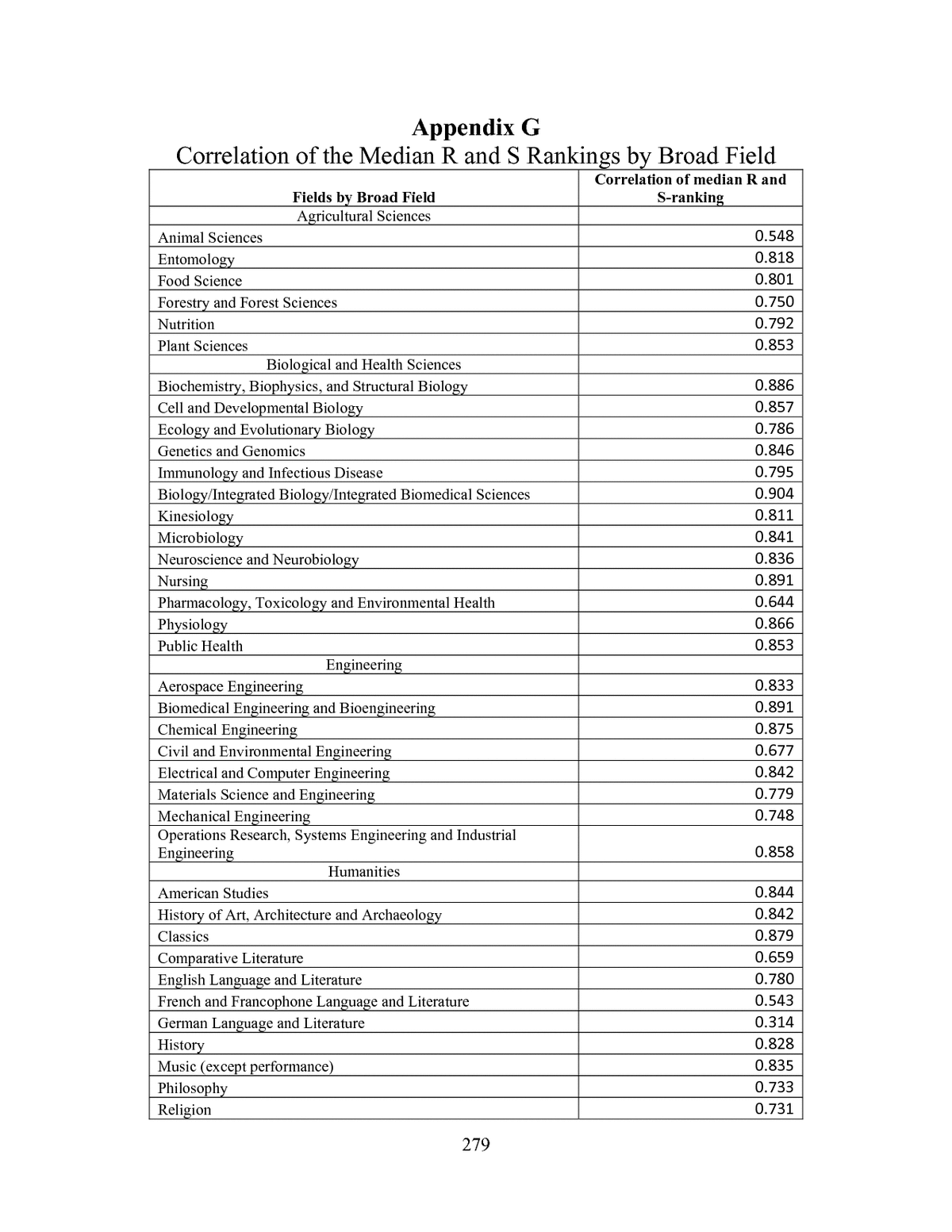

Below is the uncorrected machine-read text of this chapter, intended to provide our own search engines and external engines with highly rich, chapter-representative searchable text of each book. Because it is UNCORRECTED material, please consider the following text as a useful but insufficient proxy for the authoritative book pages.
Appendix G Correlation of the Median R and S Rankings by Broad Field Correlation of median R and Fields by Broad Field S-ranking Agricultural Sciences Animal Sciences 0.548 Entomology 0.818 Food Science 0.801 Forestry and Forest Sciences 0.750 Nutrition 0.792 Plant Sciences 0.853 Biological and Health Sciences Biochemistry, Biophysics, and Structural Biology 0.886 Cell and Developmental Biology 0.857 Ecology and Evolutionary Biology 0.786 Genetics and Genomics 0.846 Immunology and Infectious Disease 0.795 Biology/Integrated Biology/Integrated Biomedical Sciences 0.904 Kinesiology 0.811 Microbiology 0.841 Neuroscience and Neurobiology 0.836 Nursing 0.891 Pharmacology, Toxicology and Environmental Health 0.644 Physiology 0.866 Public Health 0.853 Engineering Aerospace Engineering 0.833 Biomedical Engineering and Bioengineering 0.891 Chemical Engineering 0.875 Civil and Environmental Engineering 0.677 Electrical and Computer Engineering 0.842 Materials Science and Engineering 0.779 Mechanical Engineering 0.748 Operations Research, Systems Engineering and Industrial Engineering 0.858 Humanities American Studies 0.844 History of Art, Architecture and Archaeology 0.842 Classics 0.879 Comparative Literature 0.659 English Language and Literature 0.780 French and Francophone Language and Literature 0.543 German Language and Literature 0.314 History 0.828 Music (except performance) 0.835 Philosophy 0.733 Religion 0.731 279
280 APPENDIX G Spanish and Portuguese Language and Literature 0.542 Theatre and Performance Studies 0.757 Correlation of median R and Fields by Broad Field S-ranking Physical Sciences Applied Mathematics 0.853 Astrophysics and Astronomy 0.774 Chemistry 0.863 Computer Sciences 0.889 Earth Sciences 0.877 Mathematics 0.935 Oceanography, Atmospheric Sciences and Meteorology 0.863 Physics 0.842 Statistics and Probability 0.765 Social and Behavioral Sciences Agricultural and Resource Economics 0.764 Anthropology 0.771 Communication 0.789 Economics 0.844 Geography 0.713 Linguistics 0.579 Political Science 0.819 Psychology 0.958 Public Affairs, Public Policy and Public Administration 0.783 Sociology 0.570
